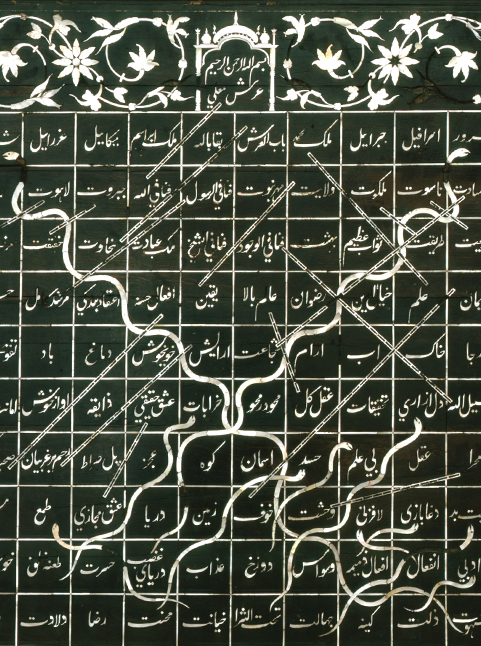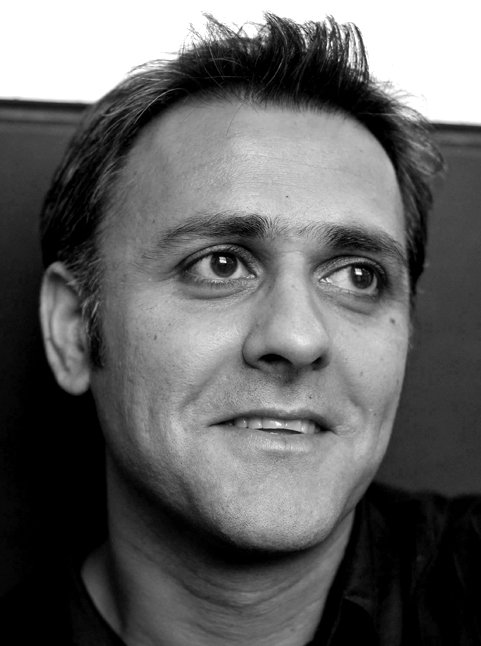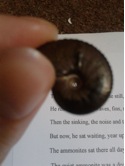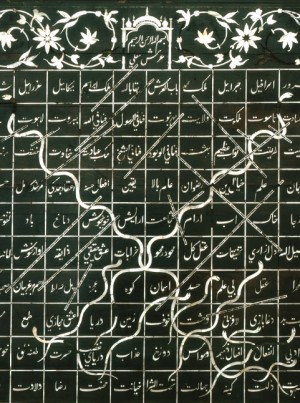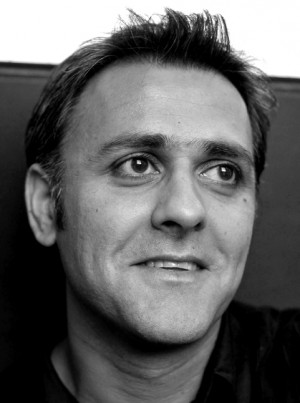Poetry in the MAA
23rd April 2013 | 0 Comment(s) | Museum of Archaeology and Anthropology
Inspired by an Event in the Cambridge University Museum of Archaeology and Anthropology (MAA): Threshold Poets in Residence present Work in Progress 19th March 2013 – readings from the Poets in Residence in 3 of the 10 University of Cambridge Museums namely, Daljit Nagra at the Museum of Archaeology and Anthropology (MAA), Ann Gray at the Botanic Gardens and Jo Shapcott at The Polar Museum and the young people who had been writing alongside them, all taking their inspiration from the different collections.
I wound my way around the Anthropological galleries of the MAA before the poetry event and found myself drawn towards a long, low display case containing an impressively preserved one-man Inuit kayak. Traditionally only men hunted in these craft. They were made from seal skins scraped and stretched, then dried and sown by a woman, usually the wife of the hunter. This particular craft, belonging to a long-dead Inuit family, was used to hunt all manner of sea mammals. Seal, walrus and even the huge bowhead whale whose migrations took them swimming in regal calm up and then down the Arctic Ocean; through its upper reaches, the Chutkin Sea and its lower, the Bering Sea. They swam, dove, surged, whirled, flipped and basked in annual procession around Barrow, Point Hope, Sitka Island, St Lawrence Island, the Aleutians Islands and the whole Gulf of Alaska which comprises the waters between the old Russia to the West and the new American state of Alaska to the East.
The surface of the kayak shows clearly the joins of the animal skins; patterns like cracks on ice, respecting the economy of shape of each skin taken from different sized seals. No fixed geometry but an organic meshing; these joins are beautiful, poignant. The hunter-owner would have recognised each skin he looked at from his round seating-hole lined with thick fur, each kill a memory, an emotion. At least he would have, before the advent of the 5th Disaster of the Inuit.
Suspended above the display of the kayak, a short row of panels reveal the testaments of three different witnesses in varying contexts whose special significance we are left to guess at. From left to right, the panels share the testimonies of Elijah Kabinya to the Elders’ Conference of 1978, Patrick Attungana to the Alaska Eskimo Whaling Commission 1985 and William A Ocquillik’s accounts of stories from his ancestors ‘The People of Kauwerak’ 1981 Alaska Pacific University Press. It is this last narrator who refers to the Four Disasters of the Inuit, and he adds a Fifth on his own initiative.
The first panels tell of an Inuit Origin Myth – a solitary and dedicated hunter spears a bowhead which is so immense ‘it has growing things on it’. The next speak of their whaling traditions, the strange ‘camping’ habits of migratory whales – an anthropomorphism for the way an individual whale will sometimes seem to stop close to an inhabited island, or even alongside a whaler and allow itself to be caught while the rest of the pod continue their migration. ‘It is hard to explain what it is like when a whale gives itself to you unless you see it’ .
All of these held my attention, but in the short time before seeing these exhibits and the beginning of the poetry event, the ones which stayed with me most, becoming as much a part of the event for me as the readings which followed, were the last two panels which told the stories of the Four Disasters of the Inuit. In William A Ocquillik’s words, ‘The Eskimo Ancestors did not have to work in their minds to stay alive. That is, they did not have to think about how to use their tools or use their resources around them to survive. Before the First Disaster they did not need to!’
The First Disaster is described as the sun moving behind the moon for three days and everything being killed by the cold: ‘all the plants, grass, fruits, berries and birds and animals were dead’. Only four families survived. This First Disaster prompted people to think, ‘work in their minds to stay alive’. They observed more closely how animals and plants catch food and master how to move faster or further with least effort. The spider’s web inspired fishing nets; a dry water-willow leaf falling onto the river and being carried swiftly by the wind across the water ‘in no time’ inspired the light-weight kayak.
The First Disaster expels the people from a state of innocence where nothing needed to be thought about and where there was no need to fear annihilation. Now, they begin to have to work, but more in mind than body. They had already been working hard in body (unlike Adam and Eve). They experiment and build and survive.
The Second Disaster is described as a great flood. But although only three families survive and they are said to have developed better ways to live, there is no fundamental change of culture as wrought by the First Disaster. This time there seemed no need for radical change. Their vulnerability was, for now, as fool-proofed against natural disasters as it could be.
The Third Disaster is described as a long period of extreme cold lasting 18 months, this time due to northerly winds bringing rain and flood followed by ice. People starved. Two survivors at the ‘upper end of the Tuksuk Channel, three at Sinruk, two at Cape Derby’. Nor does much change after this one.
Alaska and the Canadian Arctic along with its neighbour on the other side of the Ocean, the Kamchatka Peninsula make up one of the most geologically chaotic places on the planet. Between them, they share countless active volcanoes, both on land and lined up along the submerged rims of the ocean ridges. A major subduction zone on the Ocean bed creates frequent earthquakes and tsunamis. The Inuit oral history of the Disasters, in which the perspective of time is foreshortened, is the trace in tribal memory of the terrible power these events; but only up to the time of the Third Disaster. The Fourth and Fifth Disasters, although not geological events in origin, arise directly from the crossing of geological process with human destiny. No longer is Disaster the result of the unceasing evolutionary story of the Earth but of the story of human development.
The Fourth Disaster sees disease being carried to Inuit shores from the growing influx of foreign ships. At first it was not disastrous. However, in 1918, migrant miners from the south, bring the influenza virus with them. Many, many Inuit children ended up being placed in Mission Orphanages and sometimes older Inuit left altogether, ‘going Outside’. This Fourth Disaster carried with it the seed of the Fifth. ‘The Fifth disaster is now’ says William A Ocquillik. ‘These children no longer learned about the life of their forefathers’. This dispersal of the Inuit began the gradual loss of their traditional oral tradition and its central role in the preservation of their culture.[1]
Perhaps the Sixth Disaster is in waiting and gathers momentum. The 19th century gold-diggers were equipped with picks and pans, rumour and luck, guts and greed and the constant accompaniment of deadly cold and the constant craving for food. The 20th and 21st Century prospectors are insulated and well-fed. They have the technology of progress at their command so where there is mining wealth they will find it quickly, accurately, reliably, quantifiably. Nowadays all the modern prospectors and the primitive ‘Klondikers’ have in common is goggle-eyed greed. . William A Ocquillik’s narration was collated in 1981. In 1982, the Annual Report on Alaska’s Mineral Resources by the Geological Service of the US Department of the Interior, returned its first official report (something which would be repeated annually, as decreed by President Reagan in 1981). This first report announced that in addition to gold, ‘ there are in the region of 60 billion dollars’ worth of accessible minerals and metals such as molybdenum, zinc, copper, uranium and silver’ . Alaska still produces most of the US gold and uranium supplies. And even more ominous, this same report indicates that ‘Coal may prove to be Alaska’s most abundant fossil fuel. Historically, however, the primary problem has not been finding Alaskan coal, but rather finding a market for selling or using it.’ In 2013 this problem is well worth overcoming as worldwide oil supplies dwindle.……….
I shake myself from my reverie of genesis and decline. I say goodbye to my Inuit hunter and his wife as they hang the kayak high above their shelter. If they don’t, the dogs will chew the kayak skins to a gluey mush. But they stay with me for such a long time afterwards…….
The poetry event begins. The work in progress of the Poets in Residence is extraordinary and we knew it would be. Then the young people’s poetry is extraordinary. Did we know that it would be? These young poets possess rare grace, their words holding us spellbound, more I am sure, than they know. Their poems astound. They have understood so well the lives of the peoples through what they uncovered in the language of their objects. They have entered into an authentic imaginative intimacy with the makers of the objects. The ages between them melt away. The dead are brought back from faint to full; to life through the new poetry inspired by the piece of ceremonial cloth, the letter, the tool, the shroud, the bloodied rag, the toy, the jewelled mirror. We know, as we listen to the words of our new poets, that we are experiencing feelings right here tonight in the Museum, which are the feelings that the makers of the artefacts felt. Did some of them also feel that they might be living at the end of times, witnesses to The Last Disaster?
Anne Murray
[1] This tradition is being reanimated in a remarkable way through documentary and feature film by the Canadian Inuit communities. In Cambridge, a few days after the MAA event we were treated to a showing of ‘Atarnajuat – the Fast Runner’ the first full length feature film made entirely by an Inuit production unit and retelling a 500 year old Inuit myth. The film won the Golden Camera at Cannes in 2001 and was Canada’s top grossing film in 2002. I saw it only a few days after the poetry event at the MAA as part of a week of Arctic Cinema organised by the Cambridge Polar Museum and the Arts Picturehouse Cambridge.
